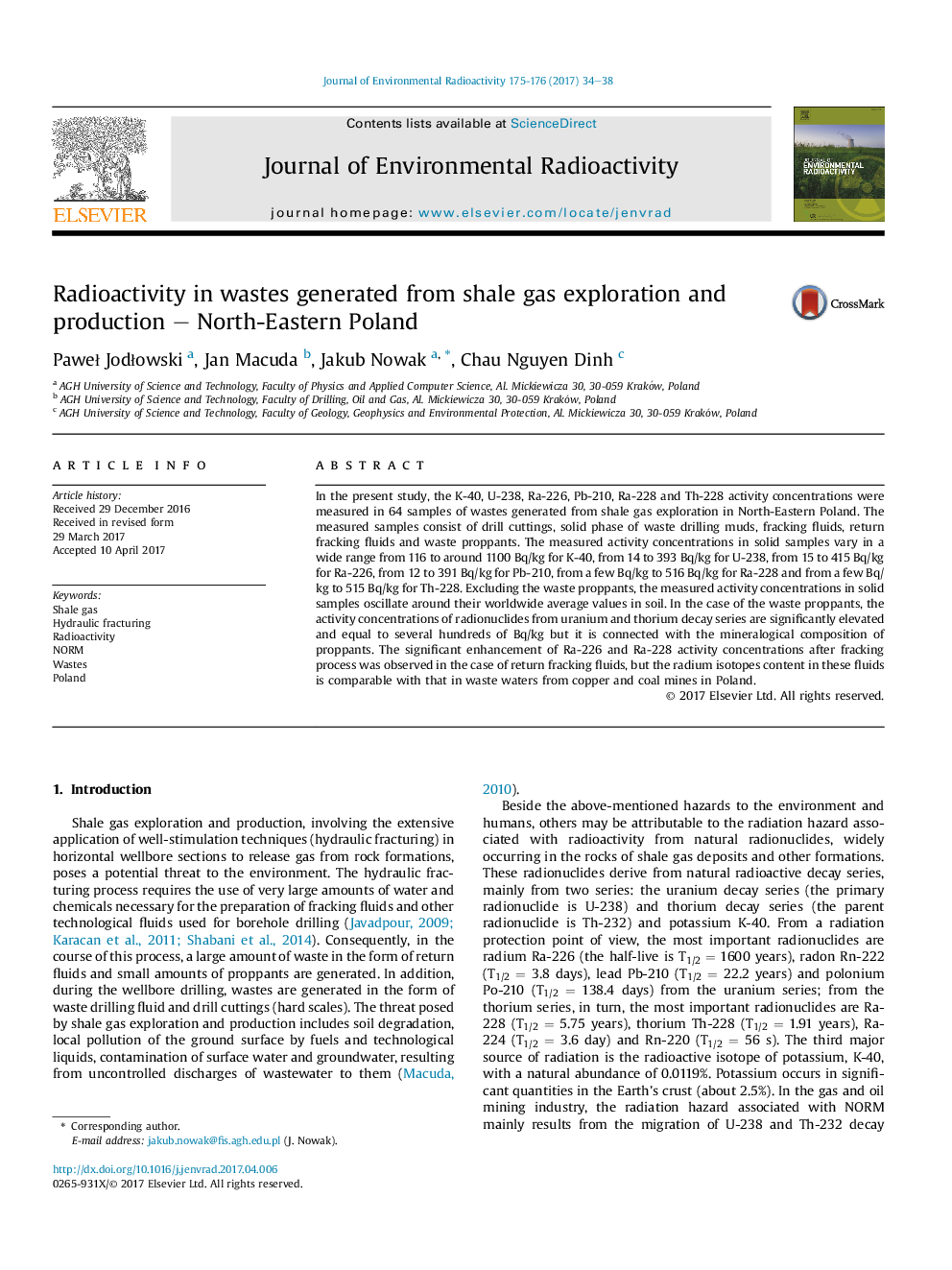| Article ID | Journal | Published Year | Pages | File Type |
|---|---|---|---|---|
| 5477558 | Journal of Environmental Radioactivity | 2017 | 5 Pages |
Abstract
In the present study, the K-40, U-238, Ra-226, Pb-210, Ra-228 and Th-228 activity concentrations were measured in 64 samples of wastes generated from shale gas exploration in North-Eastern Poland. The measured samples consist of drill cuttings, solid phase of waste drilling muds, fracking fluids, return fracking fluids and waste proppants. The measured activity concentrations in solid samples vary in a wide range from 116 to around 1100 Bq/kg for K-40, from 14 to 393 Bq/kg for U-238, from 15 to 415 Bq/kg for Ra-226, from 12 to 391 Bq/kg for Pb-210, from a few Bq/kg to 516 Bq/kg for Ra-228 and from a few Bq/kg to 515 Bq/kg for Th-228. Excluding the waste proppants, the measured activity concentrations in solid samples oscillate around their worldwide average values in soil. In the case of the waste proppants, the activity concentrations of radionuclides from uranium and thorium decay series are significantly elevated and equal to several hundreds of Bq/kg but it is connected with the mineralogical composition of proppants. The significant enhancement of Ra-226 and Ra-228 activity concentrations after fracking process was observed in the case of return fracking fluids, but the radium isotopes content in these fluids is comparable with that in waste waters from copper and coal mines in Poland.
Related Topics
Physical Sciences and Engineering
Energy
Nuclear Energy and Engineering
Authors
PaweÅ JodÅowski, Jan Macuda, Jakub Nowak, Chau Nguyen Dinh,
